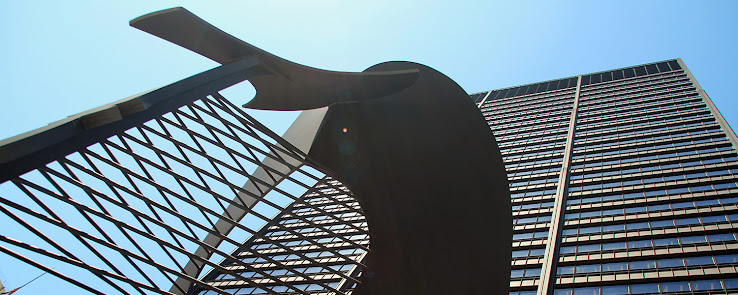
I have put many posts on Grant Park ..
# Public Art in the Grant Park .. click here ....
# Gardens in the Grant Park .. click here ..
# Often overlooked but remarkable features like pedestrian crossings, the railway lines underneath, the street lamp posts, balustrade, corbels, the Y-symbols .. click here ..
# For a brief history of Grant Park .. click here ..
This post is about the history of Grant Park ..
Grant Park [originally named Lake Park] is proudly referred to as Chicago's "open front yard" ... This large park [319 acres] located between Michigan Avenue and Lake Michigan, is free of any skyscrapers .. and is one of the reasons of Chicago's beautiful lakeside view ...
The history of Grant Park begins from 1835, when foresighted citizens of Chicago, fearing commercial lakefront development, lobbied to protect the open space. As a result, the park's original area east of Michigan Avenue was designated "public ground forever to remain vacant of buildings." It was officially named as Lake Park in 1847.

However, being next to Lake Michigan, had it's own set of challenges ... This site soon suffered from huge lakefront erosion. To solve this problem, The Illinois Central Railroad agreed to build a breakwater to protect the area in exchange for permission for an offshore train trestle.
# In the left image, we can see the breakwater ...
# In the image below, we see the railway lines which still crosses through the Grant Park compound ... A series of bridges cross the railway tracks and lead to lawns and monuments ...

After the Great Fire of 1871, the area between the shore and trestle became a dump site for piles of charred rubble, creating the fill for what is now the actual Grant Park ...
In 1901, the city transferred the park to the South Park Commission They renamed Lake Park as Grant Park, after Ulysses S. Grant, the 18th President of the United States. Renowned architect Daniel H. Burnham envisioned Grant Park as a formal landscape with museums and civic buildings. However, construction was stalled by lawsuits launched by mail-order magnate Aaron Montgomery Ward, who sought to protect the park's open character. After almost 20 years of battle in court, Ward won the case in 1911... Eventually, Ward's ideas were adopted by Daniel Burnham in his Plan of Chicago, which called for "insured light, air, and an agreeable outlook" along the Grant Park street frontage ... As a result, the Grant Park remains an open space ... proudly called Chicago's open front yard ... The preservation of open space along the lakefront offers a great view of buildings on the Michigan Avenue .. The one exception Ward consented to was for the Art Institute of Chicago, constructed in 1892 ...
The Park's structure is based on the French parks with geometric designs. It consists of a series of bridges which cross the Railway tracks that are still on the park's compound. ...

I love these concrete balustrade and bridges ..

After the bridges, the park is divided in sections with lawns, trees and monuments.. In the heart of the city, Grant Park provides open space for Chicagonas and tourists to enjoy green space to relax and rejuvinate ...
A large number of Public Art pieces are scattered over the Grant Park area ....
For Public Art in the Grant Park .. click here ...

No comments:
Post a Comment